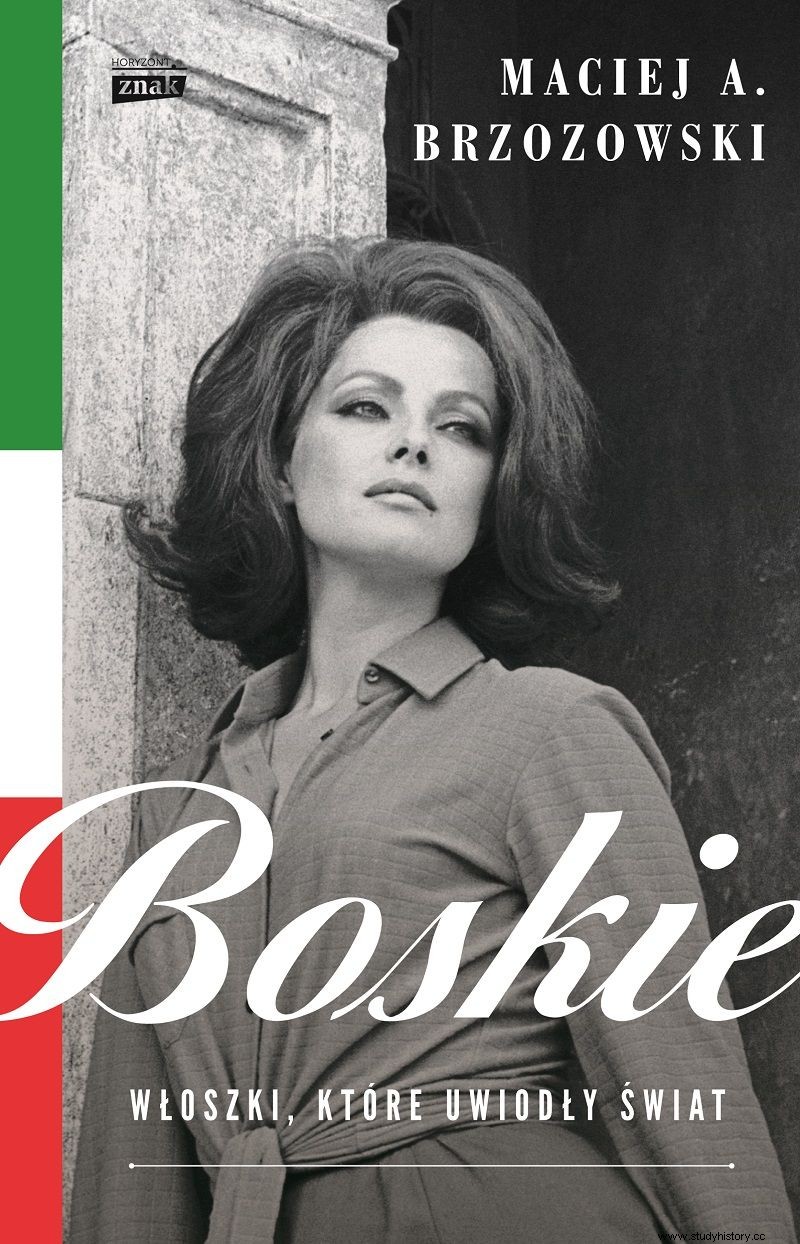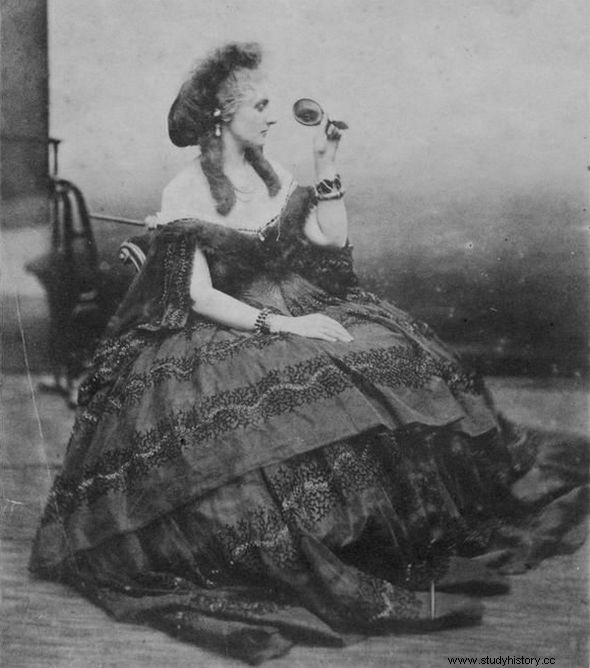He had power and influence. She was the most beautiful woman on the continent. There was also the third one who had a clever plan. As the story accelerates, the most important decisions can be made in the imperial alcove!
In 1854, Count Aleksander Walewski, son of Napoleon's Polish mistress, was the French ambassador to London. At one of the balls, he was accosted by an Italian aristocrat, Count Franceso Verasis, Count di Castiglione.
- Do you know why I came here?
Walewski didn't know.
- I want to get married and I am looking for the most beautiful woman!
"In that case, you shouldn't have left Italy," replied Count Walewski. "Go back to Florence and ask the Marquis Oldoini for the hand of her daughter Virginia." She is now the most beautiful woman in Europe .
Francesco went to Florence and married the indicated lady. This is how the story of Virginia Oldoini, Countess of Castiglione begins.

It was Count Walewski who advised Count Castiglione where to look for the most beautiful lady. He did not expect the recommended woman to play a similar role in the history of Italy as his own mother ... (photo by Pierre-Louis Pierson from 1856, source:public domain).
His Majesty's Agent
A year later, the eighteen-year-old Countess Castiglione came to Paris. Her marriage turned out to be extremely unsuccessful, and the birth of her son Giorgio did not change much. Virginia cheated on her husband ten years her senior and squandered his money.
The initiator of Virginia's Paris expedition was her relative, Camillo Cavour, the prime minister of the kingdom of Sardinia and Piedmont. He dreamed of the unification of Italy, and convincing the Italians themselves to the idea of a federation was not the only problem. Equally important was the balance of international forces.
First of all, the Austrian Habsburgs, who had several Italian states in their hands, had to be pushed out of the Apennine Peninsula. Here, help from France would be invaluable. The entrepreneurial mindset of Camilla beautiful Virginia was to "mold" Napoleon III. Eat the Emperor for us by all ways. Remember that you must achieve the goal - the prime minister didn't have to add anything else.

In Parisian salons
Cavour's plan initially ran flawlessly. Virginia came to Paris in 1855, became the mistress of Emperor Napoleon III in 1856, and regularly sent encrypted messages to Turin. In addition, the young Italian brilliant in the salons. I have never seen a beauty like this in my life and I will never see again - wrote Princess Matternich, wife of the Austrian ambassador about her.
However, the duchess had little to offer to her surroundings apart from the attributes of the body. She alienated people with her pose and vanity The Duchess of Metternich added. - With the exception of the emperor, I know of no one who would show any particular interest to her. Unfriendly towards women, Mrs. Castiglione only spoke to men.
Virginia was the denial of an unobtrusive agent. She delighted and shocked with her costumes, set trends, and posed for painters. At the same time, she was expanding her collection of enemies, among whom the number one was Empress Eugenia, of Spanish origin, the betrayed wife of Napoleon III.

Such a beauty could only be seen once in a lifetime. Photograph of Countess Castiglione from 1856-1860 by Pierre-Louis Pierson (source:public domain).
Virginia indicted
We didn't have to wait long for the effects. One day unknown perpetrators unhitched the horses from Virginia's carriage. In turn, in 1857, when the emperor was "visiting" her house in the suburbs of Paris, an unknown young man with a revolver fell into a love nest. The emperor's bodyguard shot him right away. As Maciej A. Brzozowski writes in the book "Boskie. Italian women who seduced the world ":
Countess Castiglione is taken to the police, brutally interrogated and accused of complicity in the attack . Unconscious with rage and fear, she allegedly exclaims a sentence that will definitively end her relationship with the emperor:"This Spaniard will pay me dearly for this!".
When it was discovered that the boy who had been killed was Italian, Virginia left France in a hurry. The love of the countess and the emperor did not survive, but the beautiful Italian woman fulfilled her mission. Ever since their romance, Napoleon III has shown tremendous kindness towards Piedmont.
In the summer of 1858, he even offered Cavour a face-to-face meeting at the spa town of Polmbières. It was agreed that France and Piedmont would declare war on Austria and not rest until they had driven the Austrians out beyond the Alps and Isonzo.

I must admit that Virginia coped with the entrusted mission and gave Napoleon III a very positive attitude to the issue of Italian independence ... Painting by Franz Xaver Winterhalter from 1855 (source:public domain).
The war broke out a year later. It ended with the defeat of the Habsburgs. As the well-known historian priest Bolesław Kumor put it, On the ruins of the defeat of Austria, the unification of Italy took place . Or the division of Africa, as the mischievous say, emphasizing the differences between northern and southern Italy. Virginia played her part in universal history. But she wouldn't be herself if she didn't greatly overestimate her. I created Italy She said once.
Black walls and covered mirrors
In 1863, Virginia returned to Paris, but did not return to the social gathering. The emperor had a new mistress, and when the Empire fell to the past in 1870, the conceited Italian woman found herself on the margins of public life . She survived her separated husband, her son who later died of smallpox, with whom she had never been on good terms.
She didn't take the time well. She lived with two dogs and avoided people. In her Paris apartment, the walls were painted black and the mirrors were covered. However, in her sixties, she had a big comeback planned . At the World Exhibition, which was to be held in Paris in 1900, she wanted to present a collection of her photographs. The title perfectly reflected her character:"The most beautiful woman in the world".

Virginia not only loved posing for photos, but also contributing to them by inventing costumes and props (photo by Pierre Louis Pierson, source:public domain).
"The first selfie queen"
Virginia's photos were taken in 1856-1857 and 1861-1867 by the famous French photographer Pierre-Louis Pierson. Fifty-five sessions have resulted in hundreds of photographs. The Countess of Castiglione is sometimes called "the first selfie queen" today. And there is a lot of truth to that. The Italian woman not only posed, but also directed photo sessions. Costumes, props, choice of poses, decisions about how the light should fall - it's all thanks to her.
However, the World Exhibition in Paris had to do without Virginia's pictures. She died in 1899 at the age of sixty-two. Several biographies and films were devoted to her, but - apart from her native Italy, where the countess' services for the unification of the country were remembered - she remained largely unknown. It was only the Internet (and the expiration of proprietary copyrights) that hundreds of photos of Countess Castiglione were circulated.
